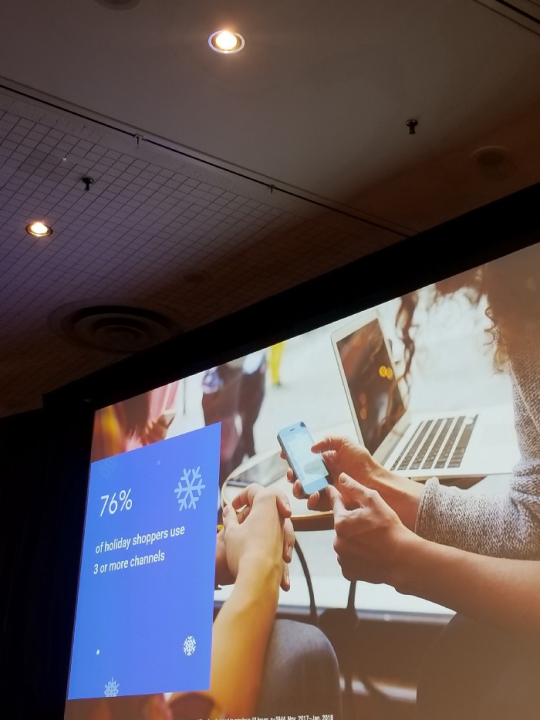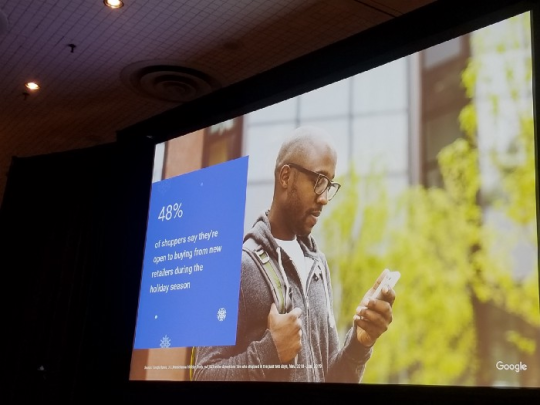How to use Marketing to Enhance the Customer Experience & Customer Journey

The Customer Experience and Customer Journey is being disrupted by technology. The technology comes in the form of social channels such as the internet, mobile, social media, publishing platforms, audio books and video on demand. All of these channels have the effect of giving consumers instant access to information about products and services. Mobile is becoming the biggest channel with 6.2 Billion Devices projected globally by 2020 According to Ericsson’s Annual Mobility report.
The way customers request information is changing. They may approach Sales, Marketing and Customer Service or an independent source for information and help choosing a product.
Competition in every product and service category has never been higher. This marks a significant shift from the days of Mad Men where brands controlled information and the conversation. This marketing shift is known as information marketing through content or simply content marketing. As a result, Marketers and brands have to become the educators or teachers of consumers. To become the educators of consumers, brands have to become the industry resource to consumers; showing how their products can solve problems and improve the lives of consumers.
Content Marketing needs to be used in Sales, Marketing and Customer Service because customers expect a consistent experience through out their journey.
2017 State of Marketing Report Key Findings
The 2017 Salesforce State of Marketing report focuses on four emerging trends:
- Marketing is undergoing an AI revolution. The marketers surveyed anticipate their AI use will grow more than 50 percent over the next two years, helping them deliver more targeted campaigns, smarter personalization and higher ROI.
- Marketers realize the importance of delivering customer journeys, but are having a hard time breaking down silos between sales, service and marketing, and bringing customer data together to deliver on this vision.
- Marketers are making significant organizational changes, within their own departments and in how they collaborate with others, such as sales and customer service.
- Over the next two years, marketers expect to see unprecedented growth in their marketing technology usage.

“According to a recent research study by Forrester, 71 percent of consumers begin their journeys by using a search engine to discover new products and services (initiation), and 74 percent reported using a search engine for consideration and purchasing (research, comparison, transaction).”

https://searchengineland.com/value-search-across-modern-consumer-decision-journey-270021
Once brands convert prospects into customers, they still need to focus on and support customers post sale. Here is where Content Marketing can help. Brands can use Content Marketing for customer retention, cross-selling and up-selling. To take advantage of this, brands need to involve their Marketing, Sales and Customer service teams in their Content Marketing strategy.
Sales Teams
Sales teams can provide a lot of information about customers, product concerns or issues and objections they face. They are front line soldiers that have a direct line to customer intelligence.
Including the Sales Team in your content marketing strategy
Meet with the sales team and encourage them to compile a list of customer complaints, objections and questions about products that they face. Ask the team to create materials that address these concern that customers can access. This could take form of blog posts, Power-points FAQ’s, product demonstrations and tutorials.
If the sales team feels uncomfortable creating content, they could be interviewed by the marketing department. The marketing department could take content /basic materials, emails from the sales team and polish it up into visually appealing content that customers can access.
Customer Service
Similar to the sales team, your customer service teams are front line soldiers to help customers with issues they face at call centers or through social media. Ask them to write down complaints they get from customers with the answers. These complaints of FAQ’s could be put up on a web site via a PowerPoint presentation, blog etc… If this is not possible for the team, interview them, collect basic materials, emails, notes and create the content yourself.
Customer Retention
Sales and Customer service team are an important part to using a Content Marketing Strategy for customer retention. The more products a customer uses from a brand, the less likely they will switch to a competitor. Remember it costs more to obtain new customers that it does to keep existing ones.
Cross-Selling & Up-Selling
Sales and Customer service teams can also help with cross and up-selling by sharing promotion and new offerings with customers. The Sales and customer service functions of brands are essential to creating a great experience for customers.
Marketing Automation and AI
Salesforce is rolling out a Customer Success cloud where Sales, Marketing and Customer Success can track the Customer Journey across the organization. Each function of the organization can create tasks for the other to make sure the customer does not fall through the cracks. I saw a demonstration at Salesforce World Tour.
This is how brands can integrate sales and customer service teams into their Content Marketing and automation strategy. How are you using content from sales and customer service teams to help your brand retain customers? What are the goals of your brands content marketing efforts?
Feel free to comment and share.
Additional Resources
https://www.salesforce.com/blog/2017/06/fourth-annual-state-of-marketing-report.html
Salesforce 2017 State of Marketing overview
About the Author
Dan is passionate about using Marketing to help businesses drive sales. He has worked on various marketing assignments that include Start Ups, Political Campaign and a Digital Marketing Conference.
Prior to Teaching, Dan served customers as an Outside Sales & Marketing Representative in the Dental industry. In this role, he taught and trained Dentists on the company’s products and services using a consultative selling approach. He also supported the company’s marketing efforts at industry trade shows & in the field through lead generation of Digital Technology along with large Dental Equipment.
He writes and publishes a business blog on the topics of Sales, Marketing and Social Media entitled Sales, Marketing & Social Media Today.
Dan is seeking a full-time marketing role. He is interested in roles in Direct, Digital, Content and Social Media Marketing. If your company is hiring for roles in these areas, contact him directly via a free LinkedIn Message or email him at Dan@DanGalante.com to set up interviews.












